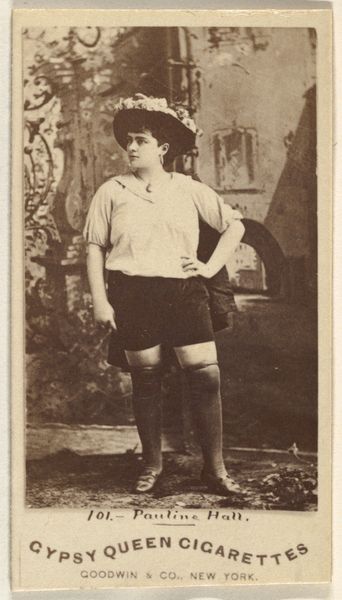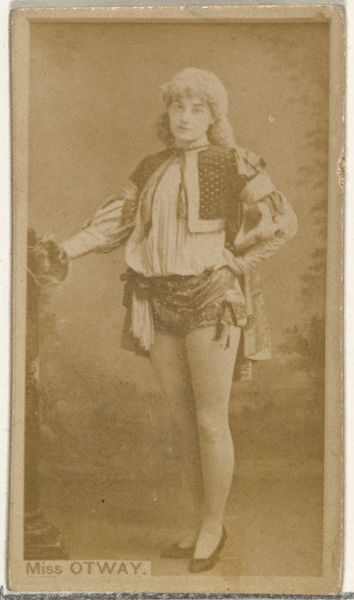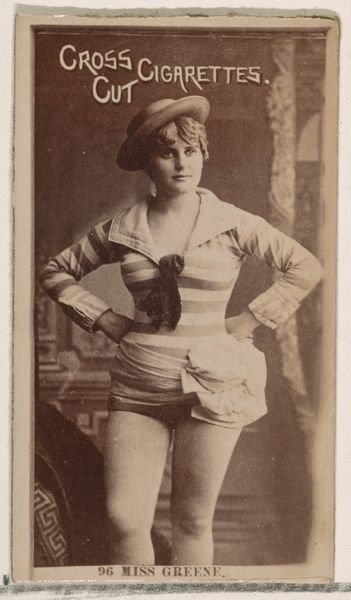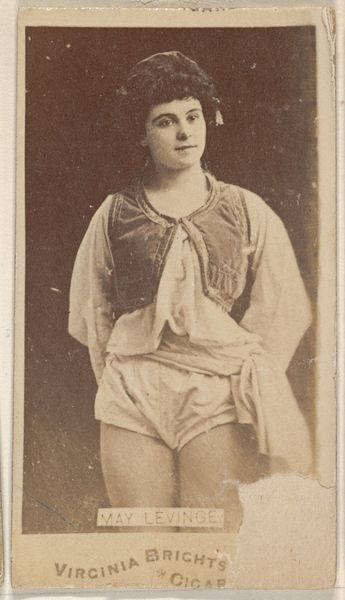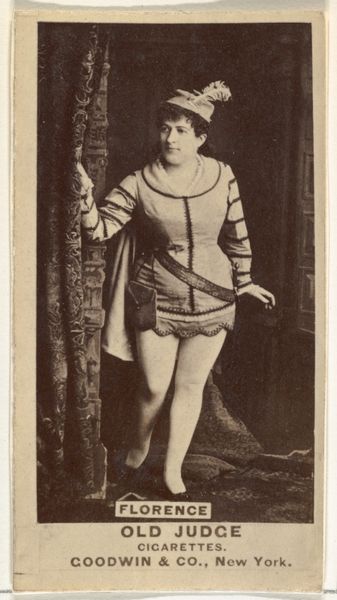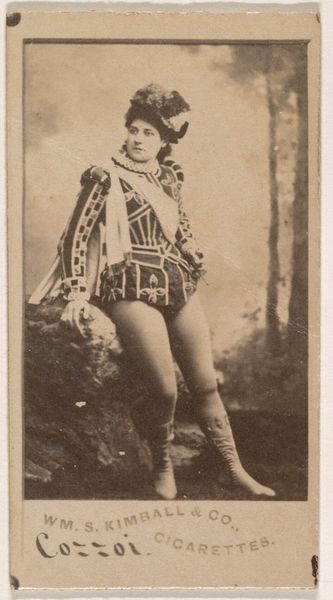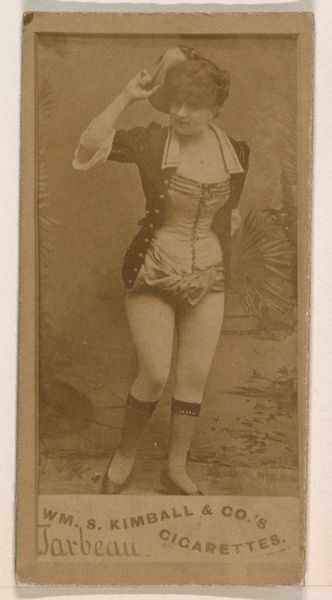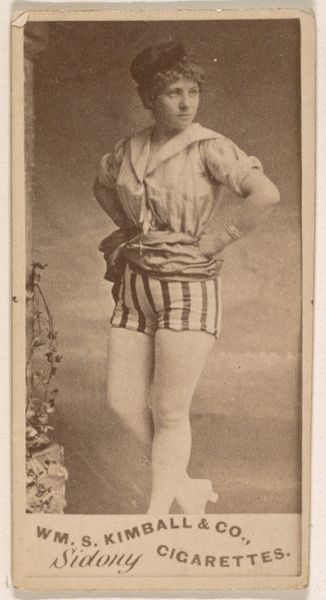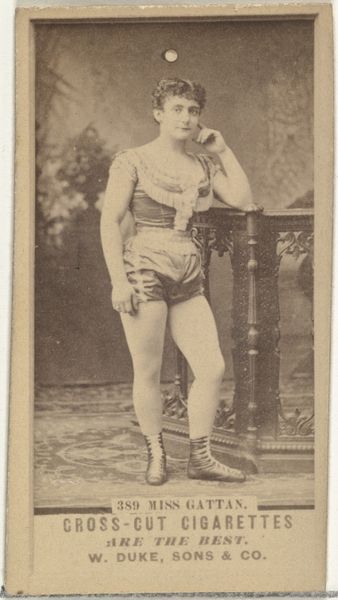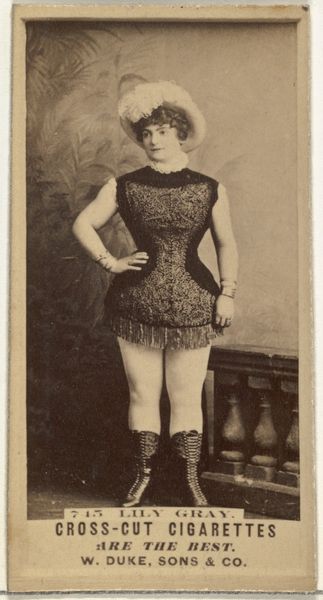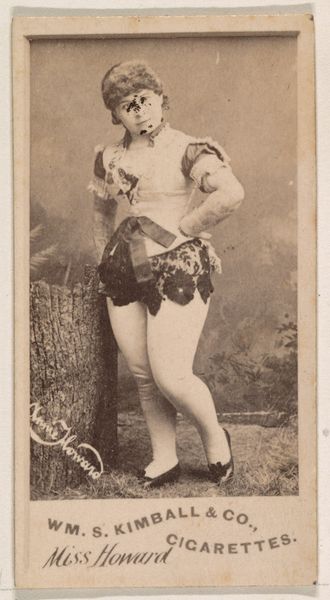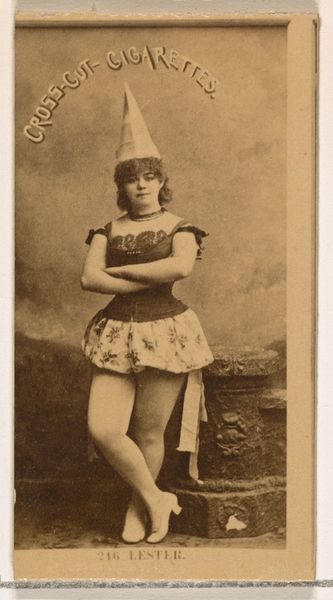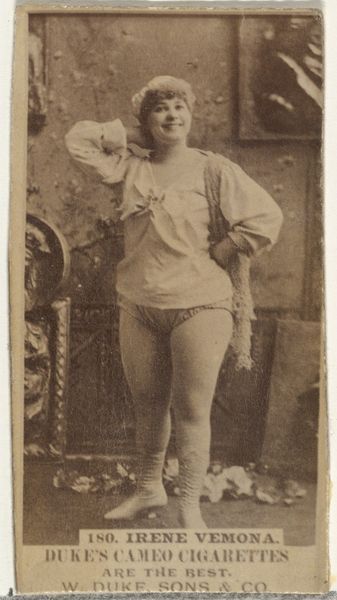
Card Number 251, Lester, from the Actors and Actresses series (N145-2) issued by Duke Sons & Co. to promote Cross Cut Cigarettes 1880s
0:00
0:00
print, photography
#
portrait
#
still-life-photography
# print
#
appropriation
#
photography
#
19th century
Dimensions: Sheet: 2 5/8 × 1 7/16 in. (6.6 × 3.7 cm)
Copyright: Public Domain
Curator: This is card number 251 from the Actors and Actresses series, titled "Lester," produced by W. Duke, Sons & Co. in the 1880s to promote Cross Cut Cigarettes. Editor: There's something quite striking about the tonality of the sepia. The restricted palette, almost monochromatic, pushes the viewer to perceive subtle variations in value and texture. Curator: Indeed. These cards functioned as promotional items, inserts within cigarette packs. But let's consider the implications of the series itself. These weren't just portraits, they were a strategic effort to align smoking with the cultural cachet of performance, entertainment, and celebrity. Editor: Semiotically, the "Cross Cut Cigarettes" brand arches like a proscenium arch in the upper portion of the card—drawing a correlation between actress and advertisement, theater and commodification. It really directs the viewer's reading of the image. Curator: Precisely. And note the details of Lester's dress and presentation—it’s theatrical, emphasizing the spectacle of performance. Yet there’s a negotiation of respectability happening here too. Consider the history of actresses; their positions were often precarious within late 19th-century society, often judged as scandalous. Editor: The line of her cane cuts directly across the midpoint of the card which mirrors the bolding of "Cross-Cut" on the banner. The compositional relationship creates balance between name and the performance it supported. Curator: Contextualizing Lester within histories of performance and gender broadens our view of celebrity, consumerism, and representation. Her visibility depended on these intersecting social and commercial forces. She could claim neither autonomy nor anonymity. Editor: Looking again at the image—her look is soft, not quite direct but also not demure, though not quite confronting, it lands as confident, self-aware perhaps. Curator: Exactly. And these objects were circulated broadly, inserted in cigarette packs and collected and traded as part of a growing visual culture. The line between entertainment, promotion, and portraiture begins to blur in terms of commerce and celebrity. Editor: Yes. It certainly shows us the layers of meaning inherent even in objects seemingly created for sheer commercial motives. Curator: Agreed. Hopefully, this has illuminated not only the image, but the broader historical conversation that accompanies it.
Comments
No comments
Be the first to comment and join the conversation on the ultimate creative platform.
